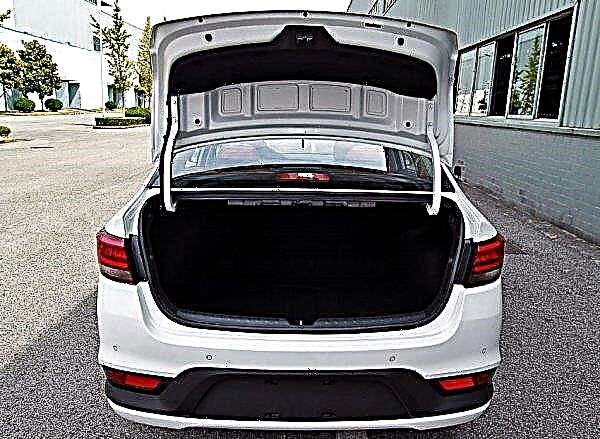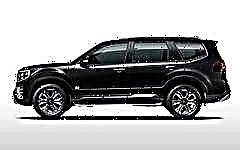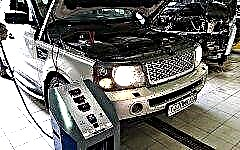

The content of the article:
- European countries with the best roads
Tourists who prefer car travel will be interested to know which European countries have the most high-quality and comfortable routes.
European countries with the best roads
Netherlands

The country rightfully occupies a leading position in the ranking, offering motorists free, smooth roads with a special porous coating that prevents the formation of puddles, as well as an abundance of junctions and interactive speed limiters.
In the presence of flat terrain, Dutch builders are faced with another problem - a large number of rivers. But the most innovative technologies have made it possible to create an extensive and dense system of magnificent tracks crossing the territory from one end to the other. Moreover, all roads in the country do not require tolls, including high-speed autobahns such as the ring road around Amsterdam.
The quality of the canvas is distinguished by absolutely all transport arteries of the country, including even secondary ones, where potholes and irregularities cannot be found.
The main multi-lane highways receive multi-level interchanges, and country roads, although they have one lane in each direction, pleasantly delight with green spaces acting as a dividing strip.
Scientific research by local companies leads to interesting experiments in road infrastructure. Thus, a number of roads have received a "smart" coating, which is powered by solar energy, thanks to which it glows at night. It is safer and more efficient, as it can warn drivers of ice accumulation, allow electric vehicles to move in their own lanes with a battery recharge function and provide the track with an energy efficient lighting system.
Another promising project is recycled plastic roads, which will be much stronger and more durable than traditional asphalt.
Switzerland

Local roads have a magnificent structure, like everything else in this country. All tracks are evenly distributed over a fairly large area and are divided into paid and free.
The authorities do not skimp on the development of road transport infrastructure, working according to their own quality standards, which guarantee the long-term operation of roads of any level.
Despite the changeable weather conditions, heavy rainfall and a large cargo flow, the canvas withstands any tests for decades. The roads here are some of the most expensive in the world, which is clearly shown by the tunnel, each kilometer of which cost 1.8 billion in Russian rubles. Construction contractors are very responsible for their work, giving a long-term guarantee, and motorists, in turn, try to keep their roads just as careful.
There is a lot of circular traffic in the country that relieves traffic flows, and each lane, even a bicycle lane, has its own traffic light. Gas stations are equipped with monitors informing about the presence of congestion further along the highway. All expressways are fenced with high bumpers, which are planted with plants and bushes to avoid blinding light reflection from oncoming traffic.
Switzerland is a paradise for auto tourism, where even high-mountain passes are trying to be maintained in proper condition to ensure the safest and most comfortable movement in any seasons of the year.
Austria

In Austria, there are 200 thousand km of roads, of which only 2.2 thousand km are toll roads. The pavement level is equally ideal on free, toll, and even country roads.
The difficult mountainous terrain at the same time complicates the task for the builders, but also makes it possible to arrange stunningly beautiful panoramic tracks. Weather conditions, rockfalls lead to the destruction of mountain serpentines, so any roads always have detours.
A road sign with a white background, a blue border and black print indicates major and minor roads; a white sign with black letters can be seen in front of the motorway.
Safety on mountain and snow-covered tracks is provided by bump stops and special road signs prohibiting the passage of cars without winter equipment.
Contractors have traditionally used concrete for the construction of highways, heavy traffic roads and for areas requiring increased safety such as tunnels longer than 1 kilometer.
Due to their strength, durability, ability to withstand deformation and distribute the load, as well as the specific rough surface, concrete routes are technically and economically justified for laying serpentines, which are so many in Austria.
Motorists appreciate both the roads of this country and the service offered, which is more common on toll roads. Every 10-15 km you can find recreation areas with drinking and industrial water, free toilets, picnic areas.
Portugal

The roads of this country, especially the suburban ones, are very picturesque and just ask for an easel. However, if national highways are always kept in excellent condition, others can cause motorists to associate them with a grater that is dangerous for the suspension.
Mostly the road surface and lighting are very good, the markings and signs are informative, and the separating bumpers are safe for drivers.
Among the interesting features worth noting sound bar, the task of which is to warn with a special buzzing sound of drivers leaving the extreme right and extreme left lane. Thus, the sound warns of the likelihood of going to the curb or bump stop.
Service stations with gas stations, shops, cafes and recreation areas are located every 25-40 km. In addition, SOS bollards are installed along the tracks, through which you can ask for help.
At the same time, many autotourists speak negatively about the quality of the asphalt pavement, noting a number of free roads that do not even have elementary markings. The impression and behavior of local motorists, who tend to violate traffic rules, be negligent and even rude while driving, are impairing the impression and behavior of local motorists, which provokes a high accident rate.
Spain

The Spanish road system is extensive but confusing enough. The authorities developed the paths that have already developed historically, so the network turned out to be chaotic and not very convenient.
There are three types of roads in the country: high-speed toll and free highways, as well as simple national roads.
Free ones are usually laid in the nearest suburbs, performing the function of a circular highway. They often take place in deep mines and underground tunnels, with a one-way direction and reinforced concrete dividing fortifications. National roads are characterized by low speeds, two-lane traffic and a route through towns and villages. These are picturesque roads - the oldest in the country, but they are not characterized by the best coverage and comfort.
High-speed autobahns lead mainly to the capital, a number of major highways also run along the coast. Toll roads allow you to travel at a speed of 120 km / h and bypass settlements. They are less spectacular and require very high fees, being the most expensive in Europe.
But all paid sites have a free backup of decent quality, albeit a roundabout route that extends the travel time.
All major roads are solid, of good quality, with excellent lighting and storm water drains.Whereas secondary passages provide significantly less safety. The winding serpentines, bridges and tunnels piercing mountain ridges and connecting hard-to-reach areas, although they have only one lane, are very high quality, taking into account the peculiarities of the relief and climate.
Road markings and signs are informative and installed thoughtfully and efficiently. Signs of speed limit or dangerous turn in the case of Spain can really save the driver's life, as they require increased attention.
In general, Spanish roads are maintained at the proper level, delighting with bright markings, well-functioning traffic lights and the condition of the roadway. Road services promptly respond to complaints about potholes and eliminate them without harming traffic.
If we compare the roads of Europe with other countries, we can note the concern for the condition of the pavement, the competent arrangement of road signs, a sufficient number of high-speed autobahns and the culture of driving.











